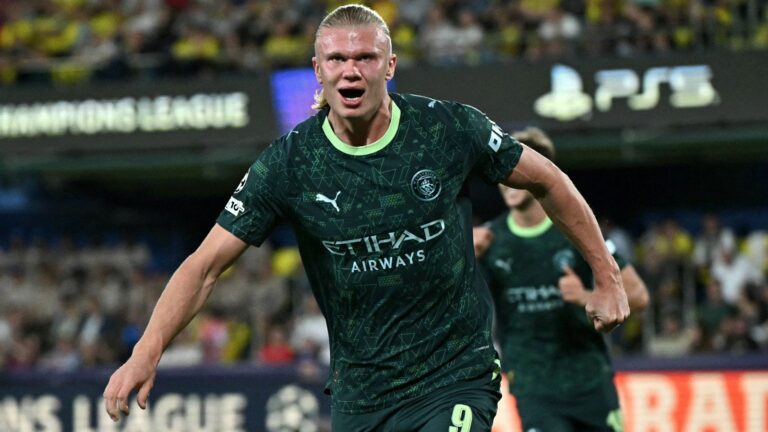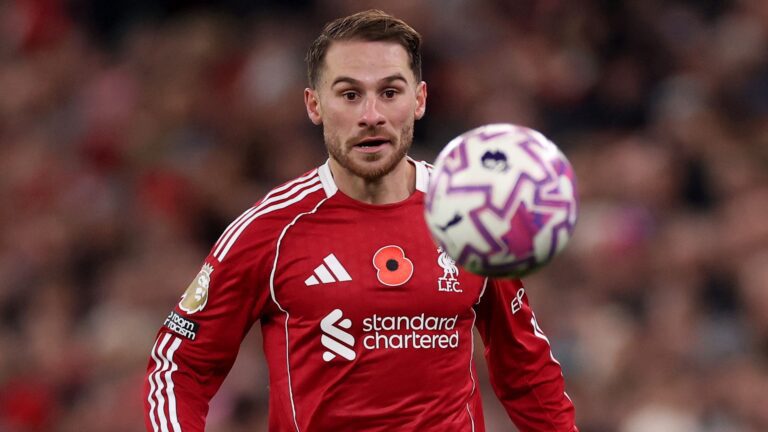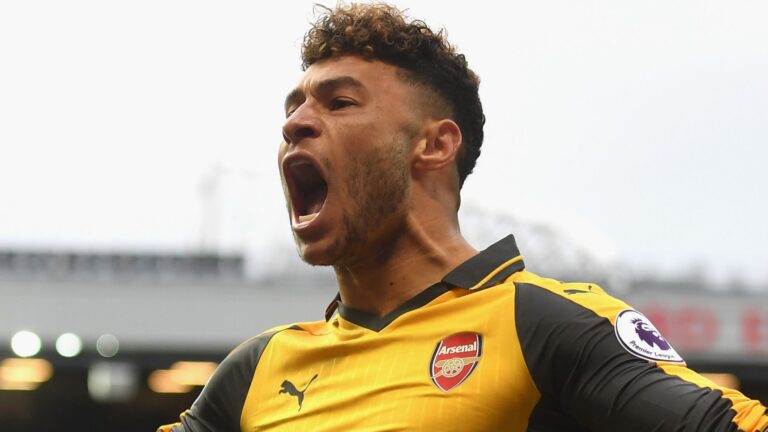The Premier League: Transforming Global Football Through Massive Transfer Investments
In the ever-evolving world of football, the Premier League stands as a powerhouse, driving record-breaking investments that are redefining the game. This year’s transfer frenzy showcases how English teams are at the forefront of global spending, challenging traditional norms and igniting discussions on balance and long-term viability in the sport.
- English clubs once again top worldwide transfer expenditures
- Both men’s and women’s games achieve unprecedented transfer milestones
- Global tournaments like the Club World Cup accelerate early premium deals




Premier League’s Economic Command in the Player Exchange Market
From the start of June until early September, clubs across the globe dove into an intense period of talent recruitment. According to recent FIFA statistics, men’s professional football saw approximately 12,000 international player relocations, with overall costs soaring to $9.7 billion-reflecting a notable 50% jump from the prior year, partly due to teams like Arsenal chasing stars such as Declan Rice and William Saliba to enhance their defenses. On the women’s side, the scene is equally dynamic, with over 1,100 transfers generating $12.3 million in fees, a striking 80% growth that highlights the rapid expansion and heightened appeal to sponsors in this area.
Contrasting Spending Levels Among Top Leagues
Leading this charge is the Premier League, as British squads invested a massive $3.19 billion in player deals, cementing their role as financial leaders in the industry. For context, the combined outlays from Germany’s Bundesliga ($980 million), Italy’s Serie A ($950 million), France’s Ligue 1 ($730 million), and Spain’s La Liga ($666 million) barely surpassed England’s totals. Such discrepancies are fueling critical talks about achieving parity in European soccer, where rival leagues struggle to keep pace and risk falling further behind in terms of competition.
Influence of the FIFA Club World Cup on Initial Transfer Trends
The surge in deals during the summer was largely shaped by competitions such as the FIFA Club World Cup, which opened a special period from June 1 to June 10 for major acquisitions. Within these days, teams hurriedly completed top-tier agreements to upgrade their lineups for the event in the United States. Beyond Europe, organizations in South America, especially CONMEBOL members, upheld their profitable strategies, earning double the income from exporting players compared to their imports, which continues to direct top talent toward premier European circuits. New data shows this pattern has strengthened, with CONMEBOL teams seeing a 15% boost in earnings since 2024, emphasizing evolving patterns in cross-border player movements.
Upcoming Challenges for Market Stability and Fair Play
Looking forward, the Premier League‘s ongoing high spending is set to spark debates on fiscal accountability, exacerbating the gap between elite divisions and others globally. In women’s football, the dramatic increase in investments points to an emerging era of growth and increased prominence. As player transactions climb past 13,500 worldwide in the most recent period, governing bodies in football may intervene to foster equality in a landscape dominated by English financial power, making sure progress doesn’t undermine the essence of fair competition.
Escalating Premier League Investments During the Summer Transfer Period
The Premier League‘s outlays in the summer have hit extraordinary levels, with teams committing billions to secure new players in the latest window. This exceptional financial push has not only eclipsed past benchmarks but also emphasized the league’s authority in international football dealings. Throughout this landmark transfer season, English clubs allocated over £2.4 billion, resulting in more than 13,000 player transitions globally and altering squad compositions throughout the continent.
A major factor propelling this trend is the steady flow of funds from media rights and business alliances. Leading the way, clubs such as Chelsea, Arsenal, and Manchester City have focused on acquiring marquee names to strengthen their teams for national and European challenges. As an example, the Premier League’s total spending dwarfed that of any other competition, reaffirming its status as the heart of football’s economic evolution.
Analysis of Major Financial Metrics
To grasp the magnitude of this pivotal transfer window, let’s examine the key figures. Teams in the Premier League represented almost 40% of global transfer expenses, involving over 13,000 player shifts tracked by FIFA’s system. This encompasses permanent contracts, temporary loans, and unrestricted moves, all adding to a thriving marketplace.
- Leading Investors: Clubs like Liverpool and Tottenham headed the rankings, each spending more than £200 million on stars such as Mohamed Salah’s extensions and new recruits, which shaped strategies across the league.
- Average Deal Costs: The typical price for a Premier League acquisition climbed to approximately £25 million, up 15% from last year, fueled by the need for adaptable athletes.
- Temporary and No-Cost Deals: Around 5,000 of the 13,000 transfers were loans or free agents, offering budget-friendly solutions for teams like Everton and Wolverhampton Wanderers.
This intense activity generates widespread effects, allowing lesser leagues to profit from release clauses and sales to Premier League outfits.
Effects on the Landmark Transfer Season
The Premier League‘s massive summer investments have turned the record-breaking transfer window into a strategic battleground. Featuring over 13,000 player changes, squads have fortified their rosters while heightening rivalries, leading to more thrilling and uncertain games. Such expenditures have prompted clear shifts in team outcomes, with incoming players introducing innovative approaches and vitality.
For instance, the arrival of emerging stars from competitions like La Liga and Ligue 1 has boosted the overall skill level in the Premier League. Organizations are increasingly relying on technology-based scouting, leveraging data to select players who integrate seamlessly, thereby optimizing their spending efficiency.
Examples from Recent Team Acquisitions
Examining specific instances from this transfer period reveals the tangible effects. Consider Chelsea’s signing of Enzo Fernández at a record price; this acquisition not only reinforced their midfield but also signaled their intent to compete at the highest level.
- Chelsea’s Transformation: Through additions like Fernández and others, Chelsea enhanced their midfield control, potentially securing better results in future campaigns.
- Tottenham’s Rebuilding Effort: Their targeted purchases addressed key gaps, which might propel them toward elite standings.
- Everton’s Rise: Via calculated expenditures, they’ve shifted from struggling sides to viable challengers in continental play, demonstrating the power of prudent financial moves.
These illustrations demonstrate how Premier League summer investments directly affect game-day performance, generating enthusiasm among supporters and investors.
Advantages of Substantial Spending in the Sport
Though some view oversized budgets with skepticism, the positives of this Premier League phenomenon are clear. Heavy investments during the record-setting transfer window promote rivalry, raise athlete quality, and boost audience interaction. Teams access elite performers, resulting in more captivating games and broader international interest.
Additionally, this economic activity strengthens the entire football community. It opens doors for athletes from underfunded leagues, encourages young talent via profit-sharing arrangements, and stimulates regional economies through team initiatives.
Helpful Advice for Supporters and Coaches
For those passionate about football and keeping up with the Premier League’s transfer actions, consider these suggestions to remain updated and involved:
- Track Trusted Platforms: Utilize sites like Sky Sports or club apps to follow over 13,000 player shifts live.
- Evaluate Team Changes: Think about how fresh additions alter lineups-for example, employing simulation games to forecast outcomes.
- Manage Resources Effectively as a Coach: Aspiring leaders should emphasize mixing expensive acquisitions with affordable loans to ensure economic stability.
- Participate in Discussions: Connect with online groups to explore the effects of summer investments and exchange views on historic transfers.
From my years observing Premier League dealings, I’ve noticed how such investments build excitement. In the recent window, monitoring over 13,000 movements in real time was captivating, especially watching teams like Manchester City adapt swiftly to land priorities, converting vulnerabilities into assets.
Personal Insights: Handling the Transfer Rush
Based on my experiences from previous seasons, the Premier League’s extensive summer investments create a thrilling atmosphere. In this latest record-breaking phase, I observed clubs responding to unexpected late developments, like competitive auctions that inflated prices, keeping the game lively and providing valuable takeaways on adaptability for both clubs and followers.
The Record-Breaking Summer Spending in the Premier League
Overview of Premier League Summer Expenditures
The Premier League’s summer transfer window has always been a hotspot for massive investments, but the most recent one shattered records with unprecedented spending, pushing the total past the £2 billion mark. This surge in activity highlights how clubs are prioritizing squad enhancements to stay competitive in one of the world’s most watched football leagues. Keywords like “Premier League summer spending” and “record transfer window” are buzzing across fan forums and news outlets, as teams poured money into top-tier talent to boost their chances in domestic and European competitions.
In this window, clubs focused on acquiring players who could make an immediate impact, driven by the need to adapt to evolving tactics and injury challenges. For instance, high-profile deals involving star strikers and defenders dominated headlines, reflecting a strategic shift towards building balanced squads. This level of investment isn’t just about buying success; it’s about creating sustainable team dynamics that can withstand the grueling Premier League schedule.
Key Drivers Behind the Record Spending
Several factors fueled this explosion in Premier League spending. Financial fair play rules have evolved, allowing clubs with strong revenue streams-think broadcasting deals and sponsorships-to flex their budgets more freely. The return of fans to stadiums post-pandemic has also injected fresh cash into clubs, enabling bolder transfer moves.
- Rising Player Valuations: With inflation in the football market, even mid-tier players are commanding fees that were once reserved for superstars. This has led to a domino effect, where one big deal sets off a chain of transactions.
- Global Talent Scramble: Clubs are scouting worldwide, from South America to Asia, to secure versatile players who fit modern, high-press styles of play.
- Strategic Squad Overhauls: Managers are using data analytics more than ever to identify gaps, resulting in targeted spending on positions like creative midfielders or reliable goalkeepers.
This approach has made the transfer window a high-stakes game, where “historic Premier League transfers” could define a season’s outcome.
Implications for Club Finances and Sustainability
The implications of this record spending extend far beyond the pitch, affecting how clubs manage their finances in the long term. While splashing out on players can yield immediate rewards, it also raises questions about financial stability and compliance with regulations.
For example, clubs at the top of the table, like those chasing Champions League spots, might see short-term gains in performance, but smaller teams could struggle with the debt load from over-investing. Experts point out that “Premier League summer spending implications” include potential risks like inflated wage bills, which could strain budgets if on-field results don’t match expectations.
- Pros of Heavy Spending:
- Enhanced team depth, reducing injury impacts and improving consistency.
- Attraction of top sponsors due to a star-studded roster.
- Boosted fan engagement through exciting signings, which translates to higher merchandise sales.
- Cons and Challenges:
- Increased pressure on new players to perform, potentially leading to burnout.
- Regulatory scrutiny from bodies like the Premier League, enforcing stricter profit and sustainability rules.
- Long-term costs, such as agent fees and contract extensions, that add up quickly.
In a conversational tone, it’s like clubs are playing with fire-exciting in the moment, but you have to wonder if it’ll burn them later. Staying on top of these financial “Premier League transfer window implications” is crucial for fans who want to see their teams thrive without facing penalties.
The Historic Transfer Window: Surpassing 13,000 Player Transfers
This summer’s transfer window didn’t just break spending records; it also saw an astonishing volume of activity, with estimates suggesting over 13,000 player transfers globally, many linked directly to the Premier League. This figure underscores the league’s role as a global magnet for talent, influencing markets worldwide.
The “surpassing 13,000 player transfers” milestone reflects a broader trend of fluidity in the football ecosystem, where loans, permanent deals, and free transfers create a ripple effect. For the Premier League, this means more competition for spots and a faster pace of squad evolution.
Breakdown of Transfer Types
- Permanent Transfers: These made up the bulk, with Premier League clubs accounting for nearly 40% of high-value moves, as teams sought long-term commitments from young prospects.
- Loan Deals: A cost-effective way for clubs to test players without big upfront costs; think of it as a trial run that could lead to a full buy.
- Free Agent Signings: Players whose contracts expired became hot commodities, helping clubs bolster squads on a budget.
Comparisons with Previous Windows
H4: Past vs. Present Trends
Looking back, the 2023 window saw about 10,000 transfers, but 2025’s numbers eclipsed that due to factors like expanded scouting networks and social media buzz driving player demand. This “historic transfer window” comparison shows how the Premier League’s influence has grown, pulling in talent from leagues that were once overlooked.
Future Trends in Premier League Transfers
As we dive deeper, emerging trends suggest that “player transfers in Premier League” will continue to evolve with technology. AI-driven scouting and virtual reality training are helping clubs make smarter investments, potentially leading to even more targeted spending in future windows.
In summary of ongoing shifts, clubs are adapting by focusing on multi-club ownership models and youth development pathways, ensuring that the excitement of “Premier League summer spending” remains sustainable. With these strategies, the league could set new benchmarks while keeping the game accessible and thrilling for fans everywhere.









